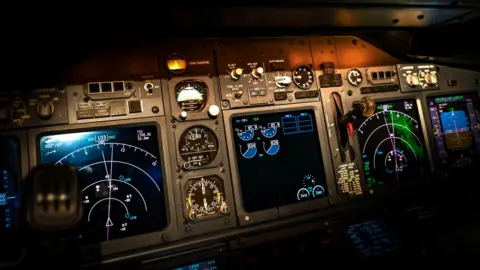A preliminary report released by India's Air Accident Investigation Bureau (AAIB) following the tragic Air India Flight 171 crash has ignited intense speculation across the aviation community. The Boeing 787 Dreamliner, which was heading to London from Ahmedabad, plunged into a building shortly after take-off, resulting in the deaths of 241 passengers onboard and 19 others on the ground. Only one passenger survived the catastrophic event.
While the AAIB’s initial report meets the international requirement to disclose a preliminary report within 30 days, it raises more questions than it answers. Intriguingly, the report highlights the activation of fuel cut-off switches mere seconds post-takeoff, leading to engine failure. This event appears pivotal for investigators but is contextualized poorly in the documentation provided.
Critics pointedly note the report lacks a verbatim transcript from the cockpit voice recorder that would clarify the communication between the pilots. Instead, it recounts only a vague reference where one pilot questions the other on the switch's activation, with no specifics on who asked or their corresponding responses. Such omissions have sparked claims in media discussions that one pilot may have deliberately shut off the engines—an assertion staunchly condemned by the Indian Commercial Pilots' Association, which emphasized the speculative nature of early interpretations based on incomplete information.
The report also indicates that the AAIB chose to selectively release information. Many industry experts contend that the brevity and vagueness of the report leave crucial pieces of the puzzle unaddressed. Aeronautical analyst Bjorn Fehrm criticized the report as being insubstantial, voicing concerns that essential dialogue contextualizing the switch's activation was omitted. He described the selective information as seemingly an attempt to mask deeper issues regarding the flight.
Furthermore, controversy also surrounds the mention of a safety bulletin issued by the U.S. Federal Aviation Administration (FAA) in 2018, indicating potential malfunctions in similar fuel cut-off switches across various Boeing models. While the report indicates that Air India failed to perform mandated inspections, the FAA has stated that their advisories were precautionary rather than indicative of an imminent safety risk, a point casting further doubt on the report's implications.
Tim Atkinson, a former accident investigator, echoed the sentiments of frustration regarding the lack of clarity in the preliminary report. He suggested that the failure to provide complete context might be an intentional strategy to help elude definitive culpability in the crash’s narrative.
As investigations typically unfold over an extended period, the full report may take longer to materialize, frustrating those seeking concrete answers and accountability. For now, the tragic events of Flight 171 remain mired in speculation, as the investigation continues to seek clarity amid an array of uncertain elements.





















